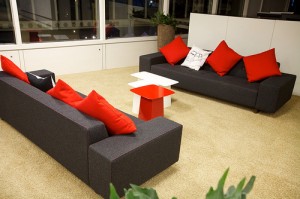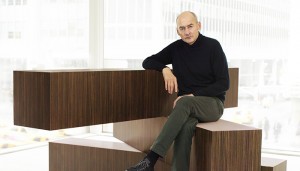The annual International Furniture Fair (aka the Salon del Mobile) held in Milan, Italy is traditionally where furniture designers and dealers go for inspiration and trend watching. This year, however, rather than taking innovation to bold new places, many exhibitors showed restraint, updating some of their greatest hits rather than creating something totally new,?according to the New York Times.
More than 300,000 visitors from 160 countries gathered in Milan April 9-14 for the chance to see how the world's top designers envisioned the future of not just furniture, but also cars, fashion and technology. But with the economy in Europe still limping, many visitors said the mood at the famous expo was more austere and conservative.
Young designers and newcomers offered more wow-factor highlights, while old favorites opted for safer bets. Here's a look at some of the trends spotted at this year's fair:
Classics with a twist: Many established designers showcasing at the fair put a modern spin on more tried-and-true favorites. The classic Eames Hang-it-All coat rack was re-imagined in pastel colors, an old Jean Prouvé's plywood-and-steel chair was translated into plastic, and the work of old masters like lighting guru Gino Sarfatti were reintroduced and updated with modern LEDs.

Poufs were all the rage at this year's fair. They're economical and lightweight, making them a great option for an office wanting to create more collaboration space.
Poufs: With the ongoing economic crisis, furniture designers have felt the pressure to make smaller pieces that don't cost as much to transport overseas, according to the New York Times. In an effort to save money shipping, many designers created variations on this small, cushioned seat. At the IFF there were wool poufs, velvet poufs, knitted poufs and asymmetrical poufs.

With a trend toward more collaboration space and mobile offices, look for familiar home furnishings showing up at work.
Home furnishings at work: A gigantic, 13,000 square-foot exhibition by Jean Nouvel called "Office for Living" displayed several different visions of the modern office, many of which incorporated furniture that straddled the line between residential and office. Categories like home and work are becoming meaningless, Andrew Cogan, chief executive of Knoll, told the New York Times.

Dutch architect Rem Koolhaas of OMA was behind Knoll's Tools for Life line, which received a lot of buzz at the International Furniture Fair in Milan.
Tools for Life: One specific piece that generated a ton of buzz was the "Tools for Life" collection designed for Knoll by OMA. The goal was to address the increasingly blurred line between work and home life by creating kinetic pieces that users could interact with in surprising ways. One piece, 04 Counter, consists of three horizontal bars that are stacked like a wall and can be used as a room divider, but that can also cantilever out, transforming it into a structure that invites people to stop, talk and collaborate. Other pieces like 05 Table and 06 Round Table can be raised and lowered allowing people to use them at different heights (anywhere from lounging to standing).
Marble: Although not usually associated with frugality, marble was one of the most popular materials on display this year. Most notable was Australian designer Jim Hannon-Tan's 3 Signs nesting tables made from a single block of marble and Spanish designer Patricia Urquiola's wall and floor coverings, shelving and tables made from 40 different types of repurposed marble that had been crushed during an earthquake that hit Northern Italy last year.





